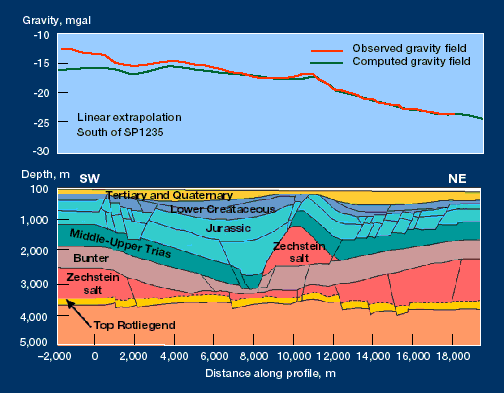What's happening in exploration
Seismic odds and ends and two discoveriesOne question this editor likes to ask marine seismic crews is "What was the most unusual thing you’ve ever caught on a streamer array?" A common answer seems to be turtles. One crew member said a diverter vane snagged a giant turtle that was entangled in a fishing net. He claimed it was more than 6 ft in diameter! Unless you’re a marine biologist, one can’t be certain that such a size turtle actually exists, but the story was that it was very mean, extending its head 2 ft out and snapping at everyone. The crew had to rig up a special litter to hoist it overboard to safety. Sharks can be very detrimental to operations, but their teeth are nice to collect (they sometimes break off in the soft plastic streamers). One time, the top half of a bikini was hauled in, but despite a high-powered binocular search, its owner could not be located. The award for the most unusual catch goes to an unfortunate fisherman. One foggy morning off the West African coast, a local resident cast his net and, unbeknown to him, snagged a streamer bird several meters deep. The other end of the net was tied to the bow of his canoe — and off he went — towed out to sea by some unseen force. The escort vessel did not see his tiny craft in the morning gray, and neither did the acquisition ship, some 6 km distant. Eventually, someone noticed a cable behaving badly, and upon investigation, the terrified native and his canoe were rescued and returned to his fishing grounds, shaken but unharmed. Caught something interesting lately? Tell us about it at fischerp@gulfpub.com. Barnacles. With the ever-increasing acquisition footprint, the time it takes to deploy and retrieve streamers is another area for cost cutting. Accordingly, long-term deployment should save money. The bane of many a ship owner, barnacles and other strange growths on in-sea equipment, are becoming bigger problems, especially in some areas, as streamer deployment time grows. Recent reports tell of barnacles, mussels and other unidentified growths that can accumulate to a 5-in. thickness, especially on couplings, and create considerable drag. Costs aside, how would you like to be standing knee-deep in barnacle scrapings for hours? There’s a fortune waiting for someone who can solve the problem, even just on the couplings. A new idea. At a recent press conference onboard its newest vessel, the CGG Alizé, the company showed a new type of spool. Although wrapped in a tarp, it was described as a device that separates deployment and retrieval functions from streamer storage. The spool apparently shuttles streamers down to a lower deck in the hull. This should allow for more deck space for more streamers or, alternatively, a smaller vessel. Solid streamer not exclusive. By the time this is printed, the exclusive contract for providing solid streamer technology will have expired. Thomson Marconi Sonar Pty co-developed the streamers with Western Geophysical. Although these streamers may not provide an overwhelming advantage, they can improve efficiency. Expect to see some redevelopment with an eye toward cost cutting as high-level talks begin with competing operators. Elf deepwater discovery. Elf announced a discovery on the Aconcagua prospect in 7,073 ft of water. The well is located on the Mississippi Canyon Block 305 in the Gulf of Mexico off the Louisiana coast. The well, drilled by the Transocean Seven-Seas drillship to a 14,000-ft depth, encountered more than 200 ft of pay. Elf is operator with a 50% interest in Block 305, along with Mariner Energy and Pioneer Natural Resources, each with a 25% interest. An appraisal well is now being drilled. In a related activity, Elf said it bid high at the March 17, 1999 Offshore Louisiana sale (OCS 172). Since late 1995, the group has obtained 93 GOM blocks. Canadian discovery. Canadian 88 Energy Corp. of Alberta, Canada, announced a gas discovery at its Strachan site. The well was drilled to 12,691 ft in the Leduc formation, with gross pay in excess of 250 ft. It tested with an A.O.F. of 32.5 MMcfd and is estimated to be capable of 10 MMcfd on a sustained basis. Tie-in operations are being completed to Gulf Canada’s Resources Ltd.’s Strachan gas plant. The well is expected to be in production as this goes to press. Correction. In the March issue on page
81, Fig. 2 printed only a blue box, which was not as intended. Below is the correct figure.
World Oil regrets the error.
Copyright © 1999 World
Oil |




